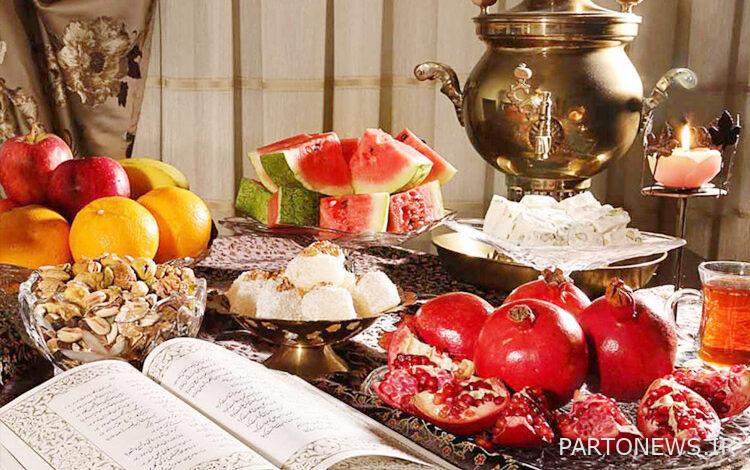The Yalda of Iranians became universal before the birth of Christ/ The traces of the ancient Yalda in the advent of the Christmas celebration

Arya Legacy: Last year, at the 17th meeting of the International Committee for the Safeguarding of Intangible Cultural Heritage, which was held in the city of Rabat, Morocco from December 6 to 12, 1401, “Yalda/Cheleh” was registered as the 19th element of the intangible cultural heritage of our country jointly with Afghanistan.
The roots of this beautiful celebration should be found in the oldest rituals and beliefs of Iranians, and in fact, the celebration of the birth of light.
But have you ever thought about the proximity of Christian Christmas and Iranian Yalda? How about the historical connection and similarity of these two celebrations? Many think that these two rituals are unrelated, but in fact there is a close connection between the two.
Years before the birth of Christ, Mithraism rituals, including Yalda, were popular among Iranians. Yalda was celebrated as the longest night of the year when light is born tomorrow. From the first day of the day, which is called the solstice or the day of the sun, the light gradually gets stronger; In fact, the cycle of lengthening the night is broken and the day is getting longer and the darkness is getting shorter.
However, this ritual was introduced to Europe a hundred years before Christ by the Iranian prisoners of war that took place after the campaigns between the Romans and Iranians, and the celebration of the birth of light and Mithraism rituals are also popular among Westerners.
In such a way that from one hundred years before Christ to four centuries after his birth, the rituals of love worship were still common among Europeans, and many mehrabs were built in Italy and the lands under its influence, including England, Germany and Austria, which after the spread of Christianity and The ban on Mithraism was mostly destroyed or on those that were built underground, churches were built. One of the remaining works of these mihrabs is the church of San Clemente in Rome, where the remains of the mihrab are visible underground and the remains of the original church on it. Another evidence of the spread of Mithraism among Europeans is calling Sunday (the day of the sun) as a holy holiday, one of the remnants of Mithraism in the West.
Later, with the officialization of Christianity in the West, since Christ (pbuh) is also known as the embodiment of light, the Yalda celebration continues as the birth of Christ at the beginning of winter.
It should be noted that according to Eastern Christian beliefs, the position of Jesus is with the sun in the fourth heaven, which is also reflected in the works of Persian literature, but the question is, what is the reason for the difference of several days between these two festivals, which are the same based on these historical evidences?
The birth of Christ on the first day of winter according to the Egyptian solar calendar was December 25, the first day of winter and coincided with Yalda and the celebration of the birth of Christ, but due to the inaccuracy of this date and the existence of four days of delay, in the new calendar that was established years after the birth of Christ was changed and the beginning of winter was moved to December 21. But the celebration of Christ’s birth still remained on December 25.
Another symbol of the Mithra religion that made its way to Christianity was decorating the green cypress tree as a symbol of resistance and endurance against the harshness and darkness of winter with gold and silver threads and keeping torches lit outside the house to get rid of the evil of the devil. At Christmas, it is visible as a pine tree decoration instead of cedar with small illuminated lights. Among the ancient Iranians, younger people also hung colorful silk cloths on the cypress tree as a symbol of the fulfillment of their wishes.
There are many pictures of the birth of Mehr on top of a cedar tree in Middle Eastern mehrabahs, which is a proof of the importance of the cedar tree in Mithraism. Although this tradition has been gradually removed in the Iranian Yalda celebration, the revival of this beautiful custom can multiply the beauty of Yalda.
In the end, what is worthy of consideration is the symbol that Yalda has for us Iranians; That our ancestors happily spent the darkest and longest night of the year by gathering together and celebrating the birth of light that is born after this long dinner. This behavior of Iranians is a great lesson of resistance, adaptation to the conditions and how to overcome the hardships that life always puts in front of people.
Report by Sheema Abdullakhani, journalist and senior expert in Persian language and literature
The sources used include the articles: Adaptation of Yalda and Christmas written by Dr. Zia Fateh Razi, Christmas and Shab Chele written by Dr. Siros Shamisa, Yalda the Birth of the Sun written by Dr. Siros Khairkhah and Yalda Genealogy of a Ritual by Bijan Teliani.
end of message/

